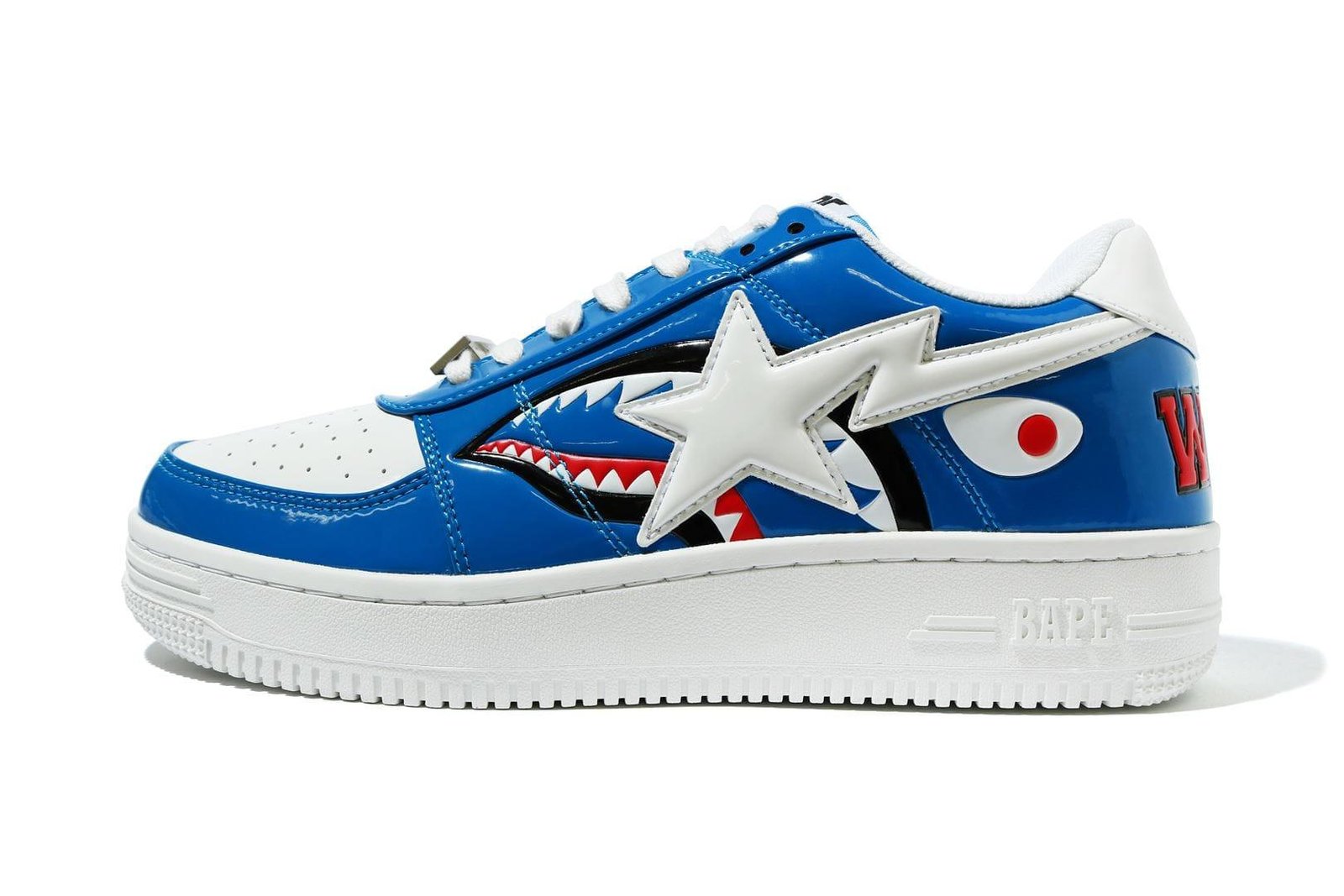The Rise and Legacy of BAPESTA in Sneaker Culture

BAPESTA is more than just a sneaker; it is a statement of streetwear supremacy and cultural significance. Originating from the Japanese fashion brand A Bathing Ape (BAPE), founded by Nigo in 1993, the BAPESTA sneaker was introduced in the early 2000s. Inspired by the iconic Nike Air Force 1 silhouette, the BAPESTA immediately stood out with its bold aesthetics, bright colors, and signature star logo replacing the Swoosh. This fresh design approach helped it become a symbol of individuality and high-fashion street culture, quickly resonating with the youth across Japan and eventually the world.
Design Evolution and Unique Aesthetics
What makes BAPESTA truly unique is its unapologetically vibrant and glossy patent leather finish. Unlike traditional sneakers that leaned toward subtlety, the BAPESTA shouted loud with colors like neon green, pink, metallic gold, and camouflage. These choices were not accidental. Nigo wanted to bring hip-hop-inspired energy to fashion, combining American street style with Japanese precision. Each release featured limited runs and exclusive drops, which helped elevate the BAPESTA to a luxury status symbol. Over time, BAPE introduced collaborations and variations of the sneaker, including shark motifs, camouflage uppers, and glow-in-the-dark features, which added a collector’s edge to its appeal.
Cultural Impact and Celebrity Endorsements
The BAPESTA reached international fame when it began appearing on the feet of celebrities and hip-hop icons. Pharrell Williams, Kanye West, and Lil Wayne were among the earliest adopters of the sneaker, giving it global visibility. In the early 2000s, Pharrell and Nigo even collaborated to create Billionaire Boys Club and Ice Cream Footwear, further intertwining the worlds of music, fashion, and footwear. These celebrities not only wore BAPESTAs but also co-designed some editions, which created a frenzy among sneakerheads. The association with high-profile artists cemented BAPESTA's status as a luxury fashion staple in the sneaker community.
Limited Edition Drops and Hype Culture
One of the key elements that fueled the popularity of BAPESTA was its limited edition releases. Each drop came with unique colorways and designs, often in collaboration with other artists or brands. These limited releases generated high demand, long lines, and a resale market that significantly exceeded retail prices. The hype culture surrounding BAPESTA was not just about owning a sneaker; it was about being part of an exclusive club that valued originality, creativity, and rarity. Over time, BAPESTA became more than footwear—it turned into a collectible item, much like artwork.
Comparison with Other Streetwear Icons
While many sneakers have made their mark in the fashion world, BAPESTA holds a unique position. Unlike Nike’s global corporate appeal or Adidas’ performance-oriented identity, BAPESTA thrived purely on street credibility and artistic rebellion. Its design similarities to the Air Force 1 stirred controversy at times, but fans saw it as a tribute rather than imitation. Where others pursued minimalism or innovation, BAPESTA embraced exaggeration and retro charm. This set it apart from other contemporaries, helping the brand maintain its cult following.
Reinvention Through Collaborations
BAPESTA has continuously reinvented itself through dynamic collaborations. These include partnerships with Marvel, SpongeBob, Hello Kitty, and even high-end fashion houses. Such collaborations brought a playful twist to the sneaker, appealing to a broader audience across age groups. The pop culture references infused in these designs helped BAPESTA remain relevant in a rapidly evolving fashion landscape. Every collaboration became a celebration of creativity, pushing the boundaries of what sneakers could represent both stylistically and culturally.
The Role of Japanese Streetwear in BAPESTA's Identity
Japanese streetwear played a crucial role in shaping BAPESTA’s philosophy. In Tokyo’s Harajuku district, where BAPE’s flagship store is located, fashion is about experimentation and bold expression. The BAPESTA embodied this spirit, offering a product that was loud, unique, and confident. It captured the essence of Japanese youth culture, which blends Western influences with local creativity. This fusion allowed BAPESTA to appeal globally while maintaining its distinctly Japanese roots.
Legacy and Influence on Modern Sneaker Trends
The influence of BAPESTA on modern sneaker culture is undeniable. It paved the way for fashion-focused sneakers that were not designed for athletic performance but for self-expression and street credibility. The resurgence of early 2000s aesthetics has further increased demand for BAPESTA retro models, and brands today often borrow from BAPESTA’s formula of bold colors and celebrity marketing. Its legacy continues to inspire new designers, artists, and sneaker brands looking to make a cultural impact.
Conclusion: Why BAPESTA Remains an Icon
Two decades after its introduction, BAPESTA remains one of the most iconic sneakers in the streetwear world. Its history is intertwined with music, fashion, and youth culture. It challenged conventions, introduced new design philosophies, and captured the imagination of global sneakerheads. While trends come and go, the BAPESTA’s ability to adapt and remain fresh is a testament to its enduring appeal.





